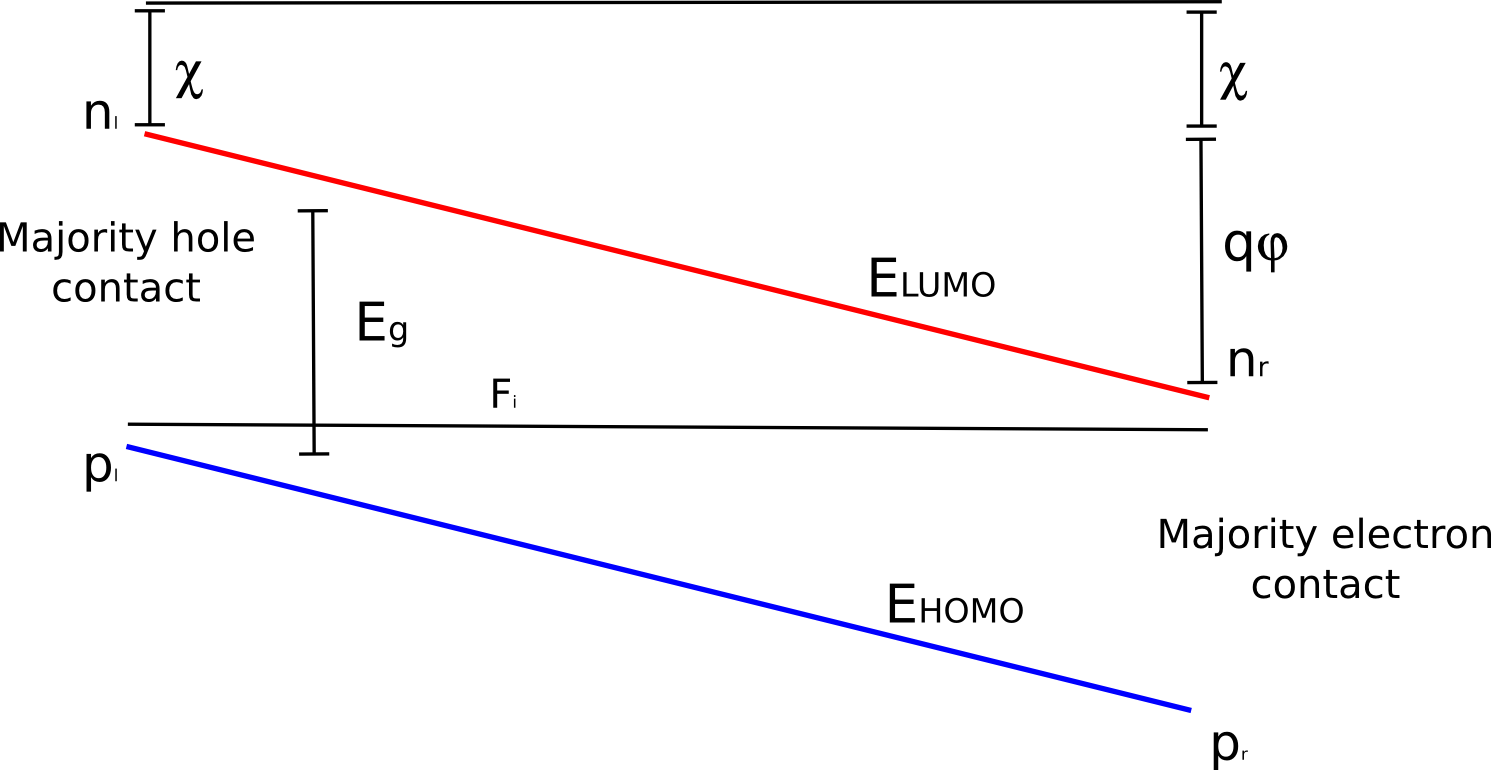Calculating the built-in potential
The first step in performing a device simulation is to calculate the built-in potential of the structure. To do this, we require the following parameters:
- The majority carrier concentrations at the contacts, \(n\) and \(p\).
- The effective densities of states, \(N_{LUMO}\) and \(N_{HOMO}\).
- The effective band gap, \(E_g\).

The left-hand side of the device is assigned a reference potential of 0 V (Fig. 9.2). The energies of the LUMO and HOMO on this side can then be written as
\[E_{LUMO}=-\chi\]
\[E_{HOMO}=-\chi-E_{g}\]
Using Maxwell–Boltzmann statistics, the equilibrium Fermi level \(F_i\) allows us to calculate the carrier concentrations on the left-hand side:
\[p_{l}=N_v \exp\!\left(\frac{E_{HOMO}-F_p}{kT}\right)\]
\[n_{l}=N_c \exp\!\left(\frac{F_n-E_{LUMO}}{kT}\right)\]
Because the device is in equilibrium, the Fermi level is flat across the entire structure. However, a built-in potential exists, so the conduction and valence band edges on the right-hand side must be shifted by a potential \(\phi\):
\[E_{LUMO}=-\chi-q\phi\]
\[E_{HOMO}=-\chi-E_g-q\phi\]
The electron density on the right-hand side can then be calculated as \[n_{r}=N_c \exp\!\left(\frac{F_n-E_{LUMO}}{kT}\right)\].
The corresponding hole concentration is \[p_{r}=N_v \exp\!\left(\frac{E_v-F_{HOMO}}{kT}\right)\]
This procedure yields the built-in potential as well as the minority carrier concentrations at both contacts. In these calculations, infinite recombination velocity at the contacts is assumed. Finite recombination velocities are not included, as they introduce four additional fitting parameters that, in practice, have not been necessary to reproduce experimental data.
Why is the built-in potential important?
The built-in potential sets the internal electric field of the device, driving charge separation and extraction. If it is calculated incorrectly, downstream results (e.g., J–V curves, recombination profiles) will be unreliable.
With the built-in potential known, we can make an initial estimate of the potential profile across the device using a linear approximation. From this, approximate charge carrier densities are obtained. These serve as the starting values for the main Newton solver, which then computes the self-consistent potential and carrier distributions. The Newton solver is described in the following section.